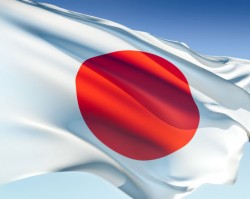 Our second article looked at Japan’s internationalization of education policy. We looked at the paper “Education Reform in Japan in an Era of Internationalization and Risk” by Professor Robert W. Aspinall of Shiga University.
Our second article looked at Japan’s internationalization of education policy. We looked at the paper “Education Reform in Japan in an Era of Internationalization and Risk” by Professor Robert W. Aspinall of Shiga University.
Comments we had on this policy:
Sooyun:
This article is an awesome overview combining cross-cultural policy of Japan. It explains that regarding international education in Japan, the Japanese government takes a “Heritage communication policy” model. The higher education system has been controlled by the Japanese government in order to maintain Japanese identity. It is also interesting that the foreign nurses are required to pass an exam equivalent to the one that Japanese nurses must take. If they fail, Japanese society would not accept them and return them to their original countries. In the middle of the paper, it was interesting that Japan chose to keep their young generation staying in Japan rather than sending them out of the country like China and Korea.
Danielle:
I find the ‘dynamism without risk’ part especially insightful to Japan’s perspective on internationalization. If you look at the numbers of Japanese students who are studying abroad in the past decade, for example, you see a steady decline. Of course, there is the aging population to contend with (less young people in general), but anecdotally I’ve heard that in Japan study abroad is no longer looked upon as an asset. Instead, it means that one’s “Japanese-ness” is in some way corrupted. Companies do not look for top English-language skills; they want someone who holds deep Japanese values and is loyal to the business.
Renca:
What I found most interesting was how the Japanese’s post war effect took a toll on Japanese’s international education. Japan was striving for mutual relationships with other nations. The Soviet Union and the Cold War were supposed to bring stability and peace, but more ethnicity conflicts arose. So, Japan wanted to have more of an international connection to connect with other nations. History does make us who we are today. Japan’s history of having wars with others shaped the way they perceive on their culture, lives, education, and so forth. Japan is one of the top international services that send students abroad and receive many students from different nations. Hopefully that will continue.
Tara’s Novel:
I really found this piece a surprising, intriguing piece of work. As the title indicates, the article discusses the ways that Japanese policy-makers have struggled to balance national interest with international concerns in their policies. Indeed, the Japanese word for ‘internationalization,’ or kokusaika did not appear in a Japanese dictionary until 1981.
Their policies had two main priorities: to control/assimilate outside elements to become ‘Japanese’ and that foreign elements would be controlled, limited, and then required to leave, eventually. One example that struck me the most was of nurses. In February 2010, three foreign nurses passed the same exam as Japanese nurses (out of a total of 254 who took it)—you realize this means, the nurses had to both study the language and the technical terms, while still doing such a difficult job! As someone who has a background in languages and family who is deeply involved in medicine, this example really made me question the ideas behind the policies. There are other examples, too, of discrimination against children born from mixed-race marriages—which just about broke my heart! He also says Japanese children were made to sing the national anthem and had to hoist the national flag at school ceremonies—memories I’m quite familiar with, growing up in the States.
And in the paper, Aspinall tries to dissuade what he knows the reader must be thinking, that these policies are incredibly ethnocentric. He says that the main reason for these policies is actually because the Japanese see the outside world as a “risky and scary place.” The Japanese government tries to use these policies as a cultural initiative—which relates back to the questions Renca, Danielle, and Fatema posed to us on the Blackboard discussion: how do we preserve culture, and cultural artifacts? Aspinall quotes the Japanese government, who says that each nation should learn about its own history, culture, and value systems, and then those of others, to strive for mutual understanding. He writes, “if the outside world, therefore, is so scary to the Japanese, then it makes sense to bolster the nation’s defences at every level.”
It makes sense that the foreign workers should become fluent in Japanese, but to make children and those foreigners “shed habits of learning they may have picked up abroad” seems unnecessarily harsh. It also leads to resentment and maybe even more fear of the unknown. I agree with Aspinall who says that the Japanese really do not have a choice but to engage with the global community and dissolve these policies.
